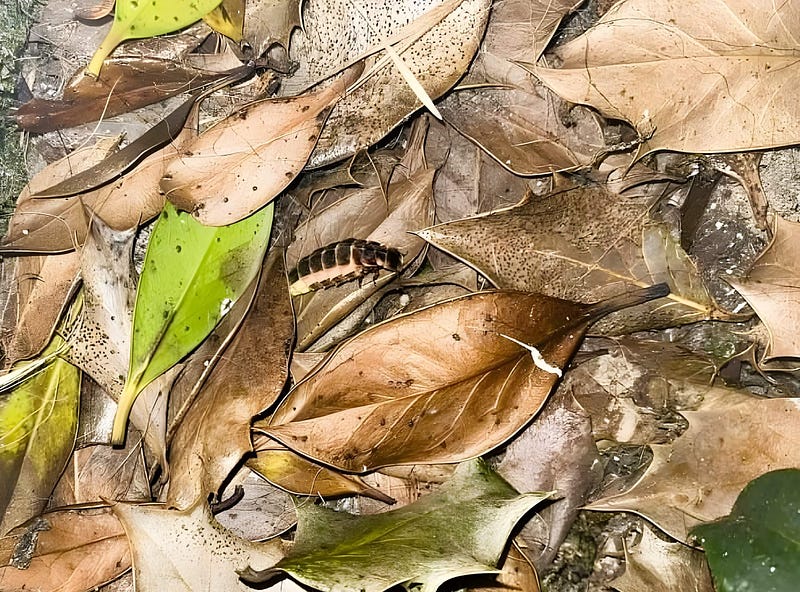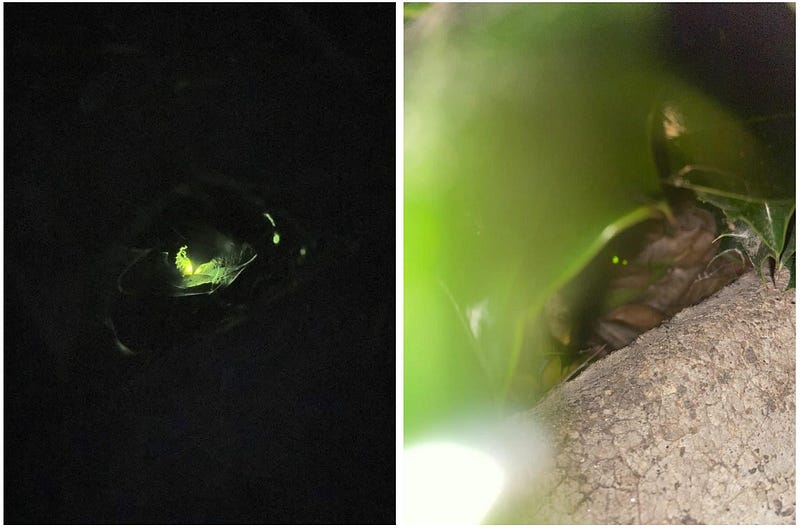A Glimpse into the Enchanting World of Fireflies in Portugal
Written on
The Quest for Fireflies
Have you recently seen a firefly? This is a question many of us have been pondering here in Portugal.

I cannot recall the last time I encountered a firefly. While I may have witnessed their glowing presence in the Portuguese wilderness, the memory eludes me. I reside in a rural area, far from the bustling metropolis of Lisbon, yet these enchanting insects remain elusive. Why is it so challenging to spot them in my region?
The encroachment of civilization is severely limiting their natural habitats, leading to a rapid decline in their populations globally. In Portugal, several firefly species exist, yet their numbers are also dwindling, contributing to my lack of memorable encounters with these incredible insects.
Fortunately, my fiancée has a different experience to share. A glimpse of a fading glow occurred while she was celebrating World Firefly Day; she noticed a flickering green light near a holly bush in our backyard. Quick to react, she captured the moment with her camera, which I am excited to share with you.

In the summer months, nature resonates with a vibrant language of luminescence as fireflies engage in a dance of light. At dusk, male fireflies flutter about, and if a female is nearby, she flashes her light to entice them. While not all fireflies emit light, those that do possess unique flashing patterns akin to a Morse code. Females can identify their male counterparts based on these patterns, ignoring signals from other species.
The first weekend of July is recognized as World Firefly Day, a time to celebrate these remarkable insects that have inspired humanity for centuries. For urban dwellers, the sight of fireflies has become increasingly rare. The scientific name for fireflies, Lampyris, translates to "lantern" in Latin.
Interestingly, there are approximately 2,400 firefly species scattered across 144 genera worldwide. Among these, North America hosts 270 species, Europe has 65, and the Iberian Peninsula is home to 10.
The Threats to Fireflies
A research team led by Sara Lewis, a biology professor at Tufts University, examined the major threats faced by fireflies. Collaborating with the International Union for Conservation of Nature Firefly Specialist Group, they surveyed 350 members of the Fireflyers International Network. Their findings, published in Bioscience, outline the vulnerabilities of various species across different regions and highlight the dire future that awaits these remarkable insects.
The study confirms that human activity has driven fireflies away from their ancestral breeding grounds, as urban development and agricultural expansion have decimated their habitats. Fireflies communicate through bioluminescence, producing light via a chemical reaction in their abdomens, which generates minimal heat. They are nearly 100% efficient in converting energy to light, while traditional light bulbs only achieve about 10% efficiency.
This has sparked interest in firefly-inspired technologies for LED bulbs. Furthermore, the enzyme involved in their light production, known as Luciferase, shows promise for medical applications. Fireflies utilize their bioluminescence to attract mates, with different species exhibiting unique flashing patterns. However, these tiny lights are highly sensitive to disturbances.
Light pollution from urban areas disrupts their mating signals, complicating their search for partners. Additionally, alterations in vegetation and temperature further exacerbate their challenges. While we are aware of the threats posed by light pollution and habitat destruction, climate change could tilt the balance against fireflies by disrupting their breeding cycles and habitats in unpredictable ways.
The misuse of pesticides also has grave consequences, wiping out their prey and leaving fireflies with a diminishing food source. Tragically, fireflies are often the first to vanish when their ecosystems are compromised, making them critical indicators of environmental health.
Fireflies in the Portuguese Landscape
In Northern Portugal, the once-thriving habitats of fireflies, including marshes, forests, and agricultural lands, have faced significant degradation, resulting in several endangered species. Some of the firefly species that can still be found in this region include:
- Larger spectacled glow worm (Lamprohiza paulino)
- Lesser spectacled glow worm (Lamprohiza mulsanti)
- Mediterranean firefly (Nyctophila reichii)
- Iberian firefly (Lampyris iberica)
- Black-winged firefly (Phosphaenopterus metzneri)
- Black firefly (Phosphaenus hemipterus)
- Lusitanian firefly (Luciola lusitanica)
- European firefly (Lampyris noctiluca)
In early July, the International Union for Conservation of Nature (IUCN) announced that four Portuguese firefly species have been added to the endangered list, serving as a wake-up call:
- Lesser spectacled glow worm
- Lusitanian firefly
- European firefly
- Black firefly
The firefly my fiancée captured in her photographs, however, is a young Iberian firefly female, which is not on the endangered list.
Creating a Safe Haven for Fireflies
I share this story to raise awareness and encourage sustainable practices that protect the remaining firefly populations. Experts recommend focusing on four key objectives:
- Preserve suitable habitats.
- Control light pollution.
- Reduce pesticide use.
- Develop guidelines for sustainable tourism.
While most of these goals are universally accepted, I question the fourth, as human presence in natural habitats may disrupt fireflies' life cycles. I believe fireflies have more to offer than just a light display for tourists or inspiration for energy-efficient bulbs; they play a vital role in the ecosystem.
My fiancée struggles with snail and slug infestations in her garden but is determined not to use pesticides. Recently, we relocated sunflower pots that were being consumed by these pesky creatures, and I’m sure she would appreciate having more firefly larvae around. These larvae are natural predators and can help control pest populations in gardens and crops.
What You Can Do to Help
Here are some steps you can take at home to foster a firefly-friendly environment:
- Allow your yard to grow wild to create a natural habitat.
- Plant native plants and flowers that provide food and shelter for fireflies and their prey.
- Firefly larvae thrive in leaf litter and moist areas, so consider leaving leaves un-raked in the fall and adding a small water feature.
- Reduce light pollution by turning off unnecessary outdoor lights at night, especially during firefly season (typically summer).
- Avoid using insecticides and pesticides, as these chemicals can harm fireflies and their food sources. Look for natural pest control alternatives.
My fiancée has adopted these eco-friendly practices, which likely explain why fireflies have found refuge in her backyard. While these actions may seem small, even minor shifts in our mindset can lead to significant changes in ensuring future generations witness the enchanting dance of fireflies.
The fireflies waltz in a spiral inside the lantern of shadow; they are fire of forlorn oracles, an ancient light I carry within.
— Poem by Rui Alves
Thank you for taking the time to read this. Your engagement is greatly appreciated.